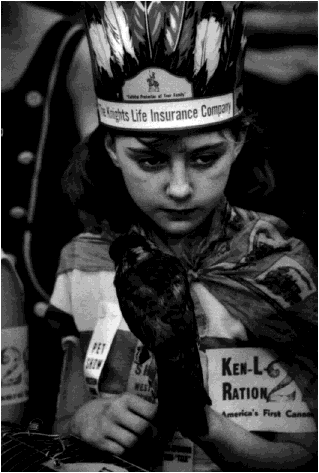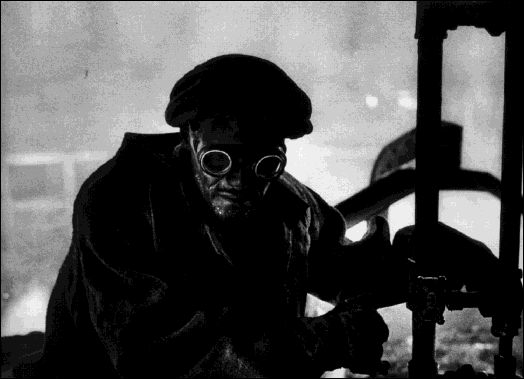Street
W. Eugene Smith's
Pittsburgh Project
Sam Stephenson, Editor
(Lyndhurst/Norton)

Up until he left in 1954, he was given over fifty assignments, the kinds of projects that Life specialized in --- a country doctor in Colorado, a coal-mining town in Wales, Schweitzer's village hospital in Africa, daily life in a Spanish village, a black nurse-midwife in South Carolina. With Life's astonishing circulation --- the magazine, at its peak, had a weekly printing of 8,500,000 --- Smith's photographs were influential, highly honored, seen by millions.
But he was the Compleat Photographer --- wanted to have total control of not only what he produced, but how it was reproduced. The editors at Life found him impossible to work with. Nine years after the end of the war, he took off on his own, and immediately landed a contract to work with historian Stefan Lorant producing a book commemorating Pittsburgh's bicentennial.
Smith began work in early 1955 --- and, according to him, never finished. He worked for three years, produced the required 400 shots for Lorant, but then went on to make another 17,000 photographs --- 600 as master-prints --- for his own project. It was to be called "Labyrinthian Walk," with essays and meditation on Pittsburgh. The photographs he accumulated --- of which some 175 are presented here --- are brilliant, sobering; an astonishing mix of shots of children playing, politicians debating, debutantes dancing, steelworkers surrounded by flame and dust and dirt, and most of all, the havoc that was the ecological nightmare called Pittsburgh: belching chimneys and darkness and grime and men and women prematurely aged in what they used to call The Glory of American Industrial Might.
For the photographer, it became, indeed, a Labyrinthian Walk. Smith was to pour himself into the project, impoverishing himself (he said he financed it "from the lining of my stomach,") destroying his family life, and, finally, driving him to distraction. He talked Photography Annual into carrying eighty-eight photographs with essay in their 1959 annual, but he was far from satisfied.
Indeed, Smith's inspirations were epic: Joyce's Ulysses, Finnegan's Wake, Thomas Wolfe, Beethoven (he had a personal collection of jazz and classical music totally some 20,000 discs). What he produced was so gargantuan that he could never bring it together, never bring it to completion. We were reminded of Todd, in John Barth's Floating Opera, working on a philosophical history project that he never completed. Rather, each week he would shift the papers representing his work to date from one to the other of the many peach baskets he kept on the floor of his office. It was so grand in concept --- better, it was too grand a concept --- that it could never ever be completed. Thus Smith's Pittsburgh project.
Smith was an overachiever. He was always on the edge --- he had gone into breakdown years before, was found wandering around Manhattan in his skivvies, had to be salted away for months. There is no doubt --- especially to this reader --- that his wartime experiences contributed to this edginess. He lived and ate and slept with the grunt soldiers who were caught up in some of the most bitter fighting in World War II. He speaks of the joy of working with them, but, too, the stink of the dead, the dismal destruction of two great war machines going at each other was the climax of the last years fighting Japan.
Unfortunately for him, he was saddled with an impeccable artistic sense of what black-and-
